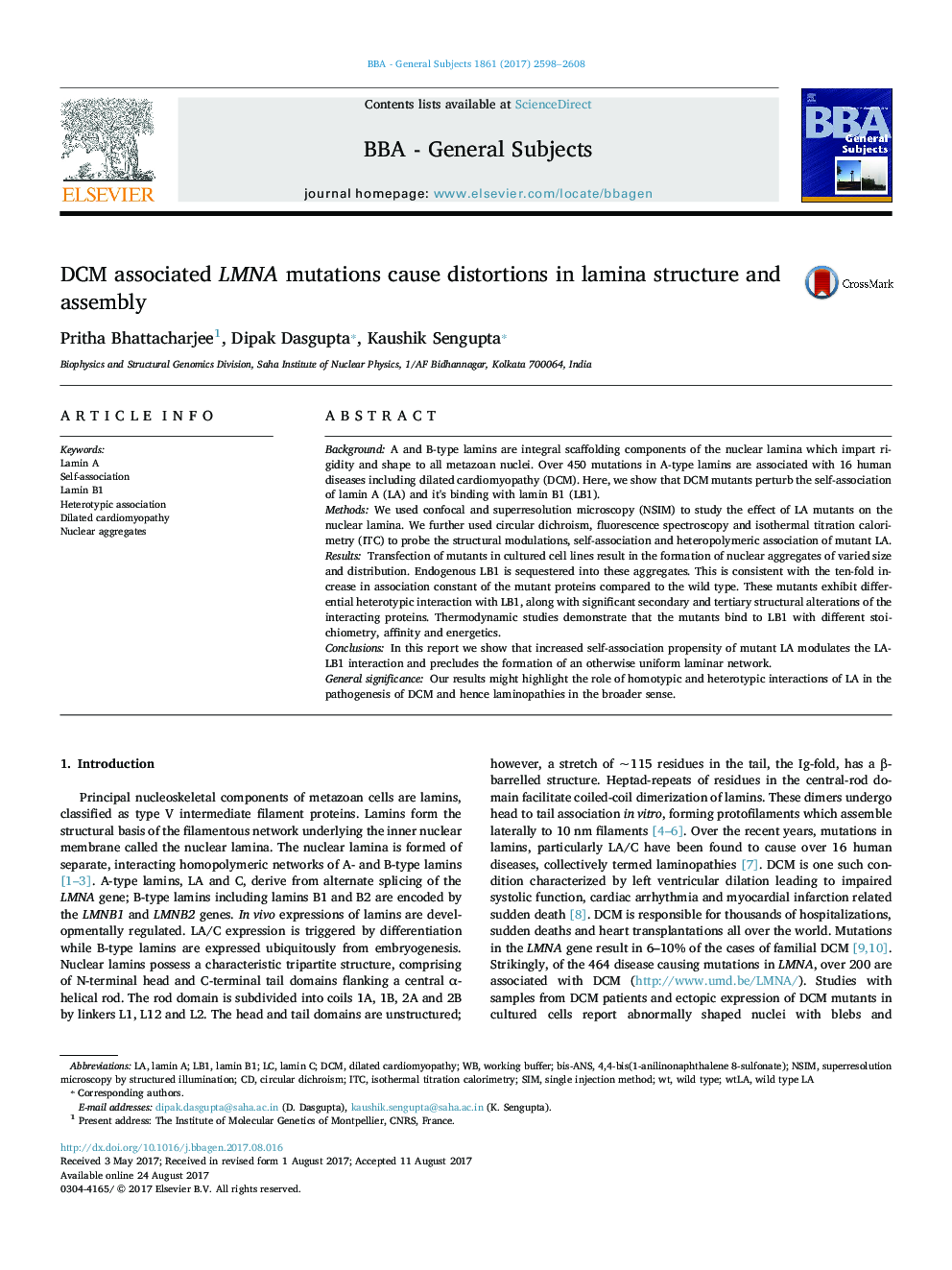| Article ID | Journal | Published Year | Pages | File Type |
|---|---|---|---|---|
| 5507852 | Biochimica et Biophysica Acta (BBA) - General Subjects | 2017 | 11 Pages |
â¢Mutants perturb secondary and tertiary structures of interacting proteins.â¢Mutants like K97E have at least 10-fold enhanced oligomerization affinities, 5 times more monomers in each oligomer and form large intra-nuclear aggregates; LB1-binding is ~ 2-fold weaker.â¢R190W has 2-fold higher self-associating propensities ~ 4-fold more monomers and form large number of small aggregates in nuclei; LB1 binding is ~ 2-fold stronger.
BackgroundA and B-type lamins are integral scaffolding components of the nuclear lamina which impart rigidity and shape to all metazoan nuclei. Over 450 mutations in A-type lamins are associated with 16 human diseases including dilated cardiomyopathy (DCM). Here, we show that DCM mutants perturb the self-association of lamin A (LA) and it's binding with lamin B1 (LB1).MethodsWe used confocal and superresolution microscopy (NSIM) to study the effect of LA mutants on the nuclear lamina. We further used circular dichroism, fluorescence spectroscopy and isothermal titration calorimetry (ITC) to probe the structural modulations, self-association and heteropolymeric association of mutant LA.ResultsTransfection of mutants in cultured cell lines result in the formation of nuclear aggregates of varied size and distribution. Endogenous LB1 is sequestered into these aggregates. This is consistent with the ten-fold increase in association constant of the mutant proteins compared to the wild type. These mutants exhibit differential heterotypic interaction with LB1, along with significant secondary and tertiary structural alterations of the interacting proteins. Thermodynamic studies demonstrate that the mutants bind to LB1 with different stoichiometry, affinity and energetics.ConclusionsIn this report we show that increased self-association propensity of mutant LA modulates the LA-LB1 interaction and precludes the formation of an otherwise uniform laminar network.General significanceOur results might highlight the role of homotypic and heterotypic interactions of LA in the pathogenesis of DCM and hence laminopathies in the broader sense.
Graphical abstractDownload high-res image (288KB)Download full-size image
